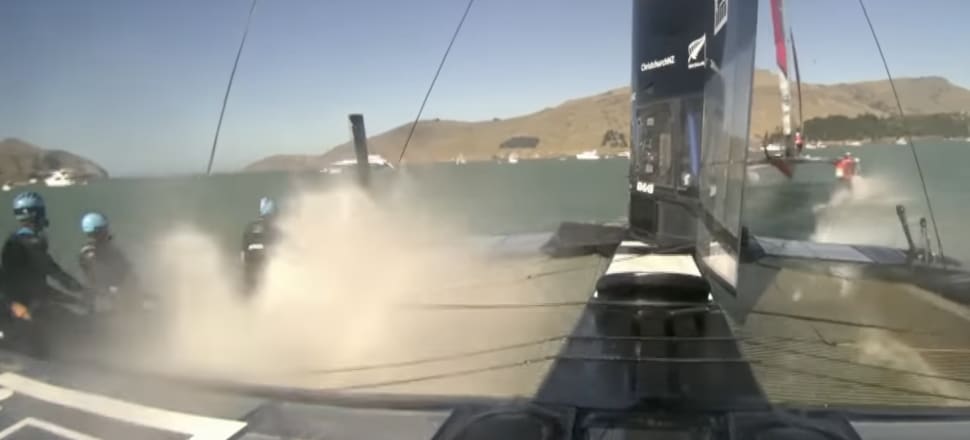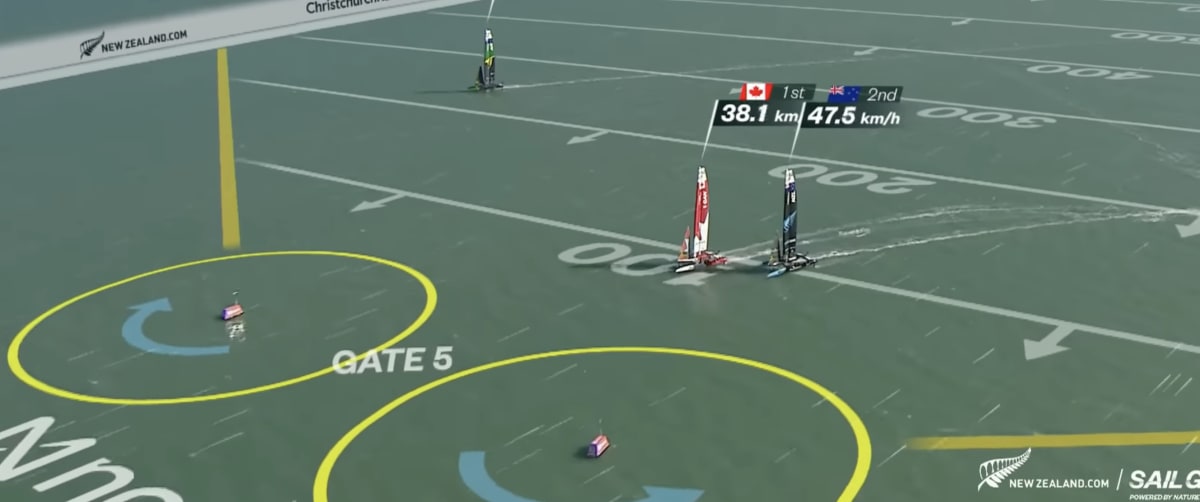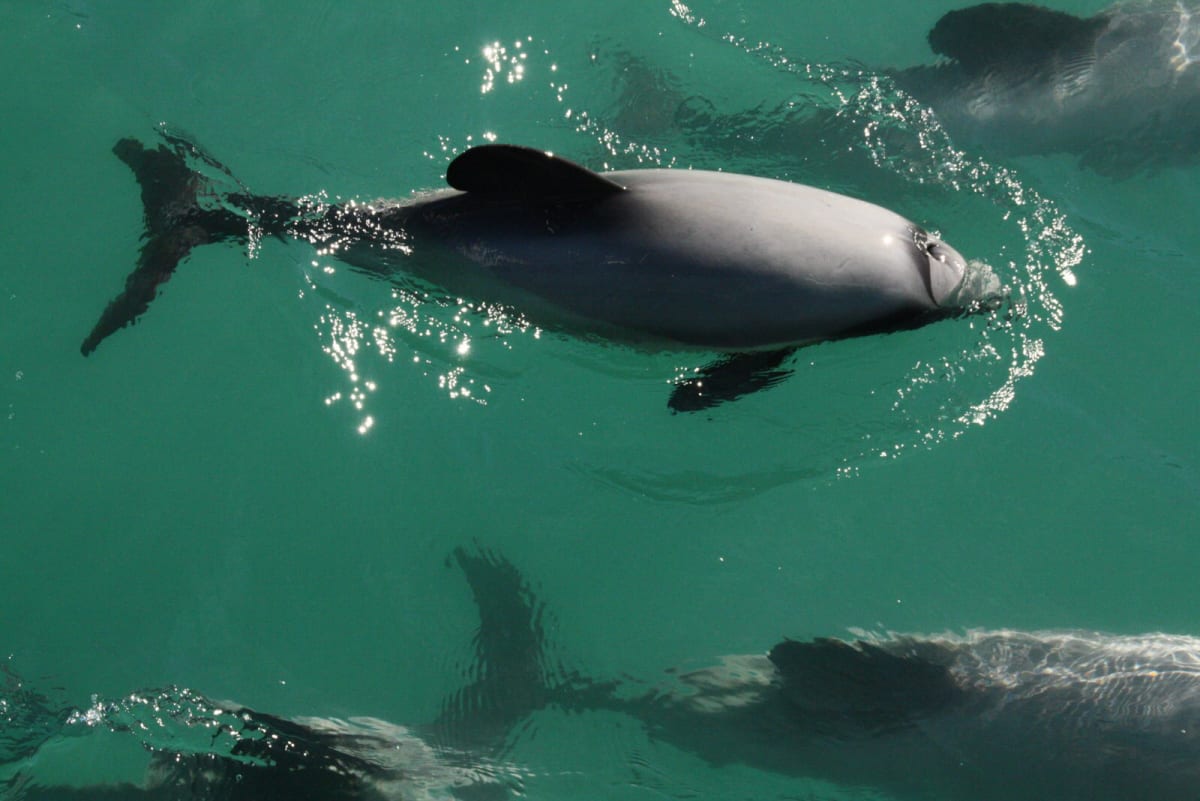
Newly-released correspondence details what SailGP’s race controller was told, and when
The goal posts were literally moved.
On March 19, a sun-drenched Sunday, officials for the international sailing race SailGP moved the course on Lyttelton Harbour/Whakaraupō 100 metres to the west, because dolphins were nearby.
Dolphins were a prime concern for race organisers, so much so that a marine mammal management plan was created to reassure everything was being done to ensure the hydro-foiling catamarans, or F50s – capable of speeds up to 100kmh – would steer clear.
After all, the race area was part of Horomaka/Banks Peninsula Marine Mammal Sanctuary.
READ MORE: * Cloud hangs over SailGP race * SailGP ignored order to halt Lyttelton race
A suite of detection measures were undertaken, such as having observers on land and water, and using underwater acoustic detectors. But a boat strike would almost certainly be fatal for the animal.
Racing had been delayed the previous day after dolphins were spotted.
The final race between New Zealand, Canada and Australia was set for 4pm.
The Department of Conservation and Te Hapū o Ngāti Wheke, Rāpaki – both of which were involved in developing the management plan, and had personnel in the event’s control room – were comfortable with racing going ahead that afternoon, according to the event log, released under the Official Information Act.
“Boats must drop off the foils promptly if directed or dolphins change course to the west.”
Observers tracked two nationally vulnerable Upokohue/Hector’s dolphins heading towards the course.
(The SailGP event log, written by control room team said, at 3.56pm: “2 x dolphins heading west around 400m off boundary.”)
“He called out a second time, much louder, and stated that SailGP was breaching their marine mammal plan.” – DoC summary of its investigation into the March 19 incident
“The dolphins continued towards zone four, travelling towards the windward gate, at the same time that the three F50s were heading towards this same gate,” wrote DoC’s Mahaanui operations manager Andy Thompson in an email, later.
On the course, two boats were neck and neck.
“New Zealand has overtaken the Canadians – their first lead of the race,” a TV commentator said, as the boats headed towards the top mark.
Canada’s boat, skippered by Kiwi Phil Robertson, crossed back in front of the Peter Burling-controlled catamaran to regain the lead.
Observers tracked the dolphins and, with the boats about 1km from the windward gate, the race controller decided the race could continue.
“Can the Kiwis put enough pressure on Canada, and find a chink in that Canadian armour?” another commentator asked.

The dolphins crossed into what was originally known as zone four, and into the revised boundary, 100m to the west.
(SailGP log, 4.08pm: “2 x dolphins on race course boundary east of windward gate boundary.”)
This boundary wasn’t physically marked or visible on electronic maps, but the marine mammal observer (MMO) coordinator was clear: the dolphins were now in zone four.
He told the race controller, seated beside him, the boats needed to come off their foils, as per the marine mammal management plan.
The coordinator repeated this a second time, “much louder”, Thompson’s email said.
It was Thompson’s turn to speak up – the F50s should be off their foils, he said.
“He called out a second time, much louder, and stated that SailGP was breaching their marine mammal plan.”
(SailGP log, 4.09pm: “DoC in event control stating to the room that SailGP are not complying.”)
Two seconds later, the dolphins were noticed behind the marine mammal observer boat.
The race controller’s decision, a second later: “To keep sailing as boats are turning and will be heading away.”
After the boats headed towards the finish, the animals tracked north, outside the course boundary, and racing concluded just after 4.11pm.
Thompson’s email, written on May 9 to a representative of Te Hapū o Ngāti Wheke, said there was uncertainty about whether the plan was breached – “I believe it was”.
Whatever the case, the plan doesn’t supersede the Marine Mammal Protection Act.
DoC’s investigation started immediately as compliance officers, aboard a departmental boat, were concerned the F50s may have been within 300m of dolphins when they rounded the mark.
The maximum penalty for a breach is $10,000.
There was no evidence individual skippers were aware the dolphins were within 300m, and DoC couldn’t establish beyond a reasonable doubt the F50s were that close to the animals.
No marine mammals were harmed, Thompson said.
“As a result of the investigation, and internal legal advice, DoC has concluded that no offence took place.”

While Thompson’s email fills in details of what has already been reported, an exchange between SailGP and DoC compliance officer Marlous Heijs is more revealing.
SailGP’s response to Heijs, written on May 1 by a person whose identity has been protected, confirms skippers were not advised of the dolphins’ presence over race radio.
Asked if the skippers personally saw dolphins while rounding the top mark, SailGP responded: “We have not asked each skipper, but SailGP’s view is that it is very unlikely any of the skippers would have seen dolphins.”
SailGP took its obligations under the regulations, and the prospect of a breach, very seriously, the email said. Protection measures were comprehensive and extensive.
The best practicable mitigation and protection measures were prioritised through the marine mammal management plan (MMP) – developed “at great expense and compromise to SailGP”.
“The level of care SailGP has taken in developing and implementing the MMP means that DoC can be assured that SailGP in no way wilfully endangered any marine mammals, and this is not a case where DoC needs to consider taking further regulatory action.”
Decision-making on the day took place in a fast-moving environment, with the event control room (ECR) dealing with limited and often ambiguous information, including from marine mammal observation spotter boats (MMO), the SailGP email said.
“However, what is clear from the logs is that the MMOs continuously supplied the ECR with inforamtion that the dolphins were somewhere ‘east’ of the location of the MMOs – and therefore at all times between the MMOs and the F50s.
“Consequently, there was no danger of the F50s being in close contact with dolphins.”
This explanation doesn’t rule out dolphins and boats being within 300m.
In fact, SailGP noted an inconsistency between the marine mammal plan and regulations which meant it was possible marine mammals could be within 300m of moving vessels without triggering the event’s shutdown procedure.
It’s not clear if SailGP provided GPS data to DoC. The May 1 email said SailGP was determining if GPS coordinates could be obtained.
The DoC investigation’s compliance jobsheet said SailGP’s formal response didn’t include specific GPS coordinates or vessel tracks. The jobsheet didn’t mention receiving that data before the investigation was concluded on May 10.
In some cases, SailGP noted in its response, the MMP is more stringent than the regulations.
The May 1 email said DoC signed off the plan, or approved it. However, DoC’s Eastern South Island operations director Jo Macpherson said that’s wrong – it merely provided technical advice.
As reported last month, a cloud hangs over SailGP’s next race on Whakaraupō.
Ngāti Wheke said its future support for the 2024 iteration – the rights for which Christchurch’s economic development agency has paid handsomely – is contingent on a review of the marine mammal plan.







